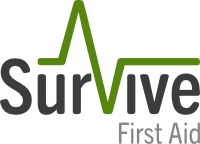ANZCOR Guideline 9.3.4 - Heat Induced Illness (Hyperthermia)

Summary
Who does this guideline apply to?
This guideline applies to adult, child and infant victims.
Who is the audience for this guideline?
This guideline is for use by bystanders, first aiders and first aid providers.
1 Introduction
Heat induced illness may be caused by:
- excessive heat absorption from a hot environment
- excessive heat production from metabolic activity
- failure of the cooling mechanisms
- an alteration in the body’s set temperature.
Factors which may contribute to heat induced illness include:
- excessive physical exertion
- hot climatic conditions with high humidity
- inadequate fluid intake
- infection (particularly a viral illness)
- inappropriate environments (e.g. unventilated hot buildings)
- wearing unsuitably heavy, dark clothing on hot days
- drugs which affect heat regulation.
The very young1, 2, 3 and very old(4) are more prone to heat induced illness.
2 Prevention
On warm, humid or hot days:
- keep infants and the elderly in cool, ventilated areas and provide ample oral fluids
- wear light coloured, loose-fitting clothing during physical exertion and hats during outside activities
- take adequate fluids during exertion on hot days – thirst is a useful guide to required fluid intake.
For participants in, and organisers of sporting events:
- allow six weeks for acclimatisation with progressive exercise before competition
- avoid vigorous exercise during a viral illness
- plan to conduct events in the early morning or late evening or in the cooler months of the year
- provide regular drink stations
- follow the support guidelines relevant to specific activities.
At no time should children or the elderly be left unattended in parked cars.
For workers in outdoor or potentially hot environments, refer to occupational health guidelines relevant to the particular environment. Work environments that may be particularly prone to precipitating hyperthermia and heat induced illness include those in which there is a high ambient temperature with reduced air movement, the worker is exposed to radiant heat and there is difficulty in maintaining adequate hydration.
3 Recognition
Mild elevation in body temperature is normally controlled with sweating, which allows cooling by evaporation. Once the individual becomes too dehydrated to sweat, body temperature can rise rapidly and dramatically.
3.1 Heat Exhaustion
Heat exhaustion is recognized by fatigue associated with headache, nausea, vomiting malaise and dizziness, which may be accompanied by collapse. Body temperature will be less than 40°C and conscious state will become normal once the victim is lying down(5).
3.2 Heat Stroke
Heat stroke is the most serious form of heat related illness and may lead to unconsciousness and death. All body organs may be affected. Heat stroke may be recognized by lack of sweating, temperature above 40°C, an altered conscious state, hot dry skin (however, in some victims profuse sweating is common) and collapse(5).
4 Management
The management of heat induced illness is aimed at removing the cause and assisting the normal cooling mechanisms of evaporation, conduction, radiation and convection.
4.1 Heat Exhaustion
- lie the victim down in a cool environment or in the shade
- loosen and remove excessive clothing
- moisten the skin with a moist cloth or atomizer spray
- cool by fanning
- give water to drink if fully conscious
- call for an ambulance if not quickly improving.
4.2 Heat Stroke
Heat stroke is a life threatening condition:(6,7)
- call for an ambulance
- resuscitate following the Basic Life Support Flow Chart (ANZCOR Guideline 8)
- place the victim in a cool environment
- moisten the skin with a moist cloth or atomizer spray and fan repeatedly
- apply wrapped ice packs to neck, groin and armpits.
ANZCOR suggest a 3-8% carbohydrate electrolyte fluid [any commercially available “sports drink”] for the treatment of exertion related dehydration (CoSTR 2015, weak recommendation, very low quality evidence)(8). If carbohydrate electrolyte fluid is unavailable, water is an acceptable alternative.
4.3 Febrile Convulsions
- Follow First Aid Management of a Seizure (ANZCOR Guideline 9.2.4).
References
- Falk B. Effects of thermal stress during rest and exercise in the paediatric population, Sports Med. 1998. 25: 221 –240.
- Harpin V.A., Chellappah G. & Rutter N. Responses of the newborn infant to overheating, Biol. Neonate 1983. 44: 65–75.
- Mellor M.F.A., Heat-induced illnesses. In: R.M. Barkin, Editor, Pediatric Emergency Medicine (2nd ed), St Louis, MO. Mosby. 1997: 496–499.
- Woodruff R., Hales S., Butler C., McMichael A. (2005) “Climate Change Health Impacts in Australia”, joint report for the Australian Conservation Foundation and the Australian Medical Association, http://www.ama.com.au.
- Rogers I. & Williams A. Heat-related illness. In: Cameron P., Jelinek G., Kelly A., Murray L., Heyworth J., editors. Adult Textbook of Emergency Medicine. 2nd ed. Sydney: Churchill Livingstone. 2004: 748-751.
- Bouchama A., Dehbi M., Chaves-Carballo E. Cooling and hemodynamic management in heatstroke: practical recommendations. Critical Care 2007, 11 (3):54.
- Ramsey C.B., Watson W.A., Robinson W.A. Effect of cooling time on survival in classical heatstroke. Journal of Wilderness Medicine 1993. 4 (1): 27–31.
- Zideman, D. A., Singletary, E. M., De Buck, E.,et al. (2015). Part 9: First aid: 2015 International Consensus on First Aid Science with Treatment Recommendations. Resuscitation, 95 , e225. http://www.cprguidelines.eu/assets/downloads/costr/S0300-9572(15)00368-8_main.pdf Accessed 19/11/
Further Reading
ANZCOR Guideline 2 Priorities in an Emergency
